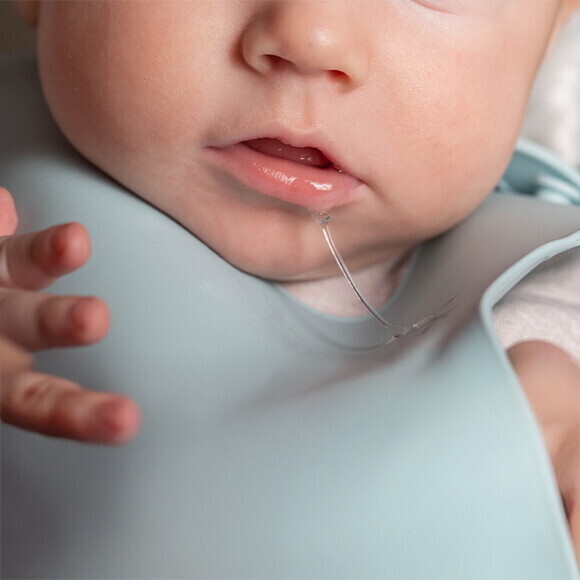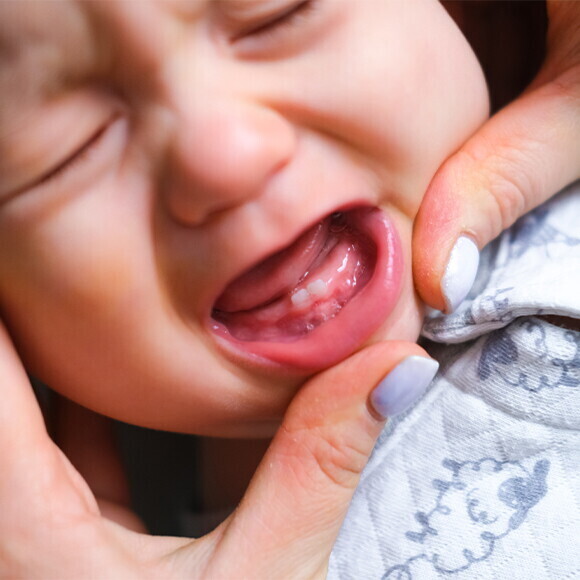
Teething Signs With Pictures
Teething is an important stage in an infant’s life when their primary teeth begin to show. This natural developmental process can cause some discomfort for the baby, making it essential for mothers and caregivers to recognize the signs of teething. In this article, we will explore the key teething signs with helpful images, helping you understand the changes your baby is going through. We will also discuss common symptoms during this sensitive period and effective, practical ways to relieve teething pain. Keep reading to learn more about this natural and crucial phase in your child's healthy growth.
What Is Teething?
Teething is a natural process that children go through when their teeth start to show. This stage usually occurs at an early age, as the teeth develop within the jaws and break through the gums, which can cause some discomfort and fussiness in the baby’s routine and behavior. Teething is an essential part of a child's development, contributing to oral growth and preparing them for transitioning to solid foods, which play a key role in their nutrition and ability to chew properly.
The first teeth usually begin to appear around six months of age, though this may vary from child to child depending on genetic and developmental factors. The lower central incisors are typically the first to emerge, followed by the upper central incisors and then the lateral incisors. By the age of three, most children will have a full set of 20 primary teeth, which are vital for speech development, chewing, and maintaining proper spacing for future permanent teeth.
The timing of teething varies among children, as it may begin anywhere between the fourth and seventh months, and sometimes even earlier or later. It is important to monitor the signs accompanying this phase, such as increased drooling, irritability, and a constant desire to bite, as these indicate that the teeth are about to emerge and the gums may be sore. If you are investigating how to ease your baby's discomfort during teething, you can explore baby oral care products that help soothe and provide comfort, such as teething rings, cooling gels, and gentle gum massagers designed specifically for infants.
Teething Symptoms in Infants
Teething is a significant stage in an infant’s life as their teeth begin to emerge, leading to several noticeable symptoms and behavioral changes. One of the most prominent signs is excessive drooling and increased swallowing, as the baby experiences discomfort due to pressure on the gums. You may notice that your baby creates some mess while playing or feeding because of drooling, which is completely normal during this phase and there is nothing to worry about.
Additionally, changes in the baby’s behavior and sleep patterns may occur. Your child may become more restless and struggle to sleep due to the pain associated with teething, especially during nighttime. It is important to be patient and provide comfort during this time, as their needs may change significantly and require extra attention.
Irritability and gum swelling are also common signs of teething. You might notice that your baby’s gums appear inflamed or reddish, and they may be more sensitive when their mouth is touched. You can use soothing remedies such as soft foods or teething toys to alleviate these symptoms. Ensuring proper care for your baby will make this phase more comfortable and manageable for them.
Ways to Relieve Teething Pain
Teething can be a challenging phase for infants, causing discomfort and pain. However, there are several effective ways to help ease this discomfort and support your baby during this sensitive stage.
One of the most effective methods is massaging the gums using special teething tools. These tools are designed to be safe and easy to use, helping to reduce pressure and soothe pain in a gentle and effective manner. Parents can gently massage their baby’s gums with clean fingertips or offer teething rings that provide a comforting sensation when chewed on.
Providing cold foods is another excellent way to soothe a baby’s gums. Frozen fruit pieces or chilled yogurt can help reduce pain and inflammation due to their cooling effect, which calms irritated gums. However, it is essential to ensure that the foods are age-appropriate and easy to swallow to prevent any choking hazards or digestive discomfort.
Additionally, teething gels or numbing ointments containing pain-relieving ingredients can offer temporary relief. However, it is advisable to consult a pediatrician before using any such product to ensure its safety and suitability for your baby’s age and overall health. Using these methods can make the teething phase more comfortable for both the baby and the parents.
Teething Signs with Pictures
To be prepared for the teething phase, it is helpful to recognize the common signs associated with this stage. Here are some images that illustrate the key signs your baby may exhibit during teething:
Image of excessive drooling:
One of the most noticeable teething signs is increased saliva production.

Image of inflamed gums:
Your baby’s gums may appear red and swollen due to the pressure caused by growing teeth.

Image of a baby biting on toys:
Babies tend to chew on objects to relieve pain and discomfort.

Image of a restless baby:
Teething can cause irritability and restlessness due to discomfort.

Recognizing teething signs through images helps you provide the right care for your baby during this stage. Keep in mind that every baby experiences teething differently, and symptoms may vary in intensity.
How to Handle Teething
Managing teething requires patience and understanding. Here are some tips to help your baby through this phase:
- Create a comfortable environment: Ensure your baby feels relaxed both during the day and at night.
- Use teething toys: Specially designed teething toys can help soothe sore gums.
- Offer cold foods: Chilled foods can help reduce pain and inflammation.
- Consult a doctor: If the pain is severe or symptoms seem unusual, seek advice from a pediatrician.
By following these tips, the teething stage can be less challenging for both you and your baby. Remember, this is a natural and temporary phase that will soon become part of your child’s growth journey.

